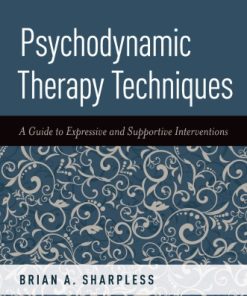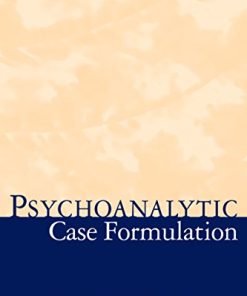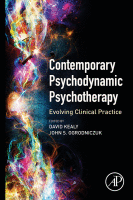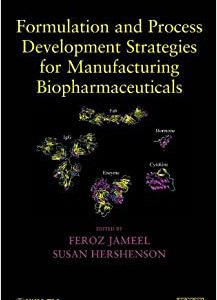PSYCHODYNAMIC FORMULATION an expanded approach The psychodynamic formulation collective 1st edition by John Wiley 1119797284 9781119797289
$50.00 Original price was: $50.00.$25.00Current price is: $25.00.
PSYCHODYNAMIC FORMULATION : an expanded approach. The psychodynamic formulation collective 1st edition by John Wiley – Ebook PDF Instant Download/DeliveryISBN: 1119797284, 9781119797289
Full download PSYCHODYNAMIC FORMULATION : an expanded approach. The psychodynamic formulation collective 1st edition after payment.
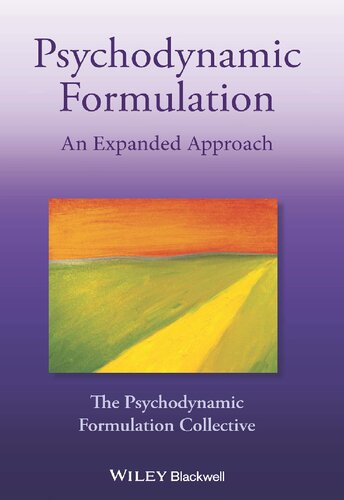
Product details:
ISBN-10 : 1119797284
ISBN-13 : 9781119797289
Author : John Wiley
Psychodynamic Formulation
A leading text for psychodynamic clinicians and practitioners
Psychodynamic Formulation: An Expanded Approach delivers an exceptional exploration of psychodynamic explanations and hypotheses that seek to explain how a person’s conscious and unconscious thoughts and feelings may have developed and may be causing or contributing to the challenges they face.
This latest edition of the leading reference includes a refreshed and reinvigorated emphasis on the impacts of culture and society, as well as the importance of diversity and inclusion, on psychodynamic formulation. It puts new focus on lived experience, including trauma, and on how clinical bias can contribute to the perpetuation of trauma.
PSYCHODYNAMIC FORMULATION : an expanded approach. The psychodynamic formulation collective 1st Table of contents:
PART ONE: Introduction to the Psychodynamic Formulation
1 What Is a Psychodynamic Formulation?
What is a formulation?
What makes a formulation psychodynamic?
Unconscious vs. implicit
A developmental process throughout life
Biological, psychological, and social
More than reporting
Different kinds of psychodynamic formulations
Not a static process
Formulating psychodynamically is ultimately a way of thinking
References
2 How Do We Create a Psychodynamic Formulation?
The three basic steps to creating a psychodynamic formulation
Co‐creating formulations—it takes two
3 How do We Use Psychodynamic Formulations?
Formulation is our map
Using a psychodynamic formulation in treatment
Reference
4 Psychodynamic Formulation and Bias
The historical context
Theoretical bias
The broad impact of the environment
The humility of formulating
References
5 Who We Are Affects Our Formulations
Every therapeutic pair is unique
How to be aware of the way that our similarities to and differences from our patients affects formulation
References
PART TWO: Describe
6 Self
Defining the area: self
Variables for describing patterns related to the self
Learning about patterns related to the self: opening questions, then stories
Describing self‐experience
Variables for describing the SELF
References
7 Relationships
Defining the area: relationships
Variables for describing patterns related to relationships
Trust
Learning about relationships: opening questions, then stories
Describing relationships
Variables for describing RELATIONSHIPS
References
8 Adapting
Defining the area: adapting
Adapting and early life stress
Modes of adapting and cultural norms
Variables for describing patterns of adapting
Learning about adapting: opening questions, then stories
Describing adapting
Variables for describing ADAPTING
References
9 Cognition
Defining the area: cognition
Variables for describing cognition
Learning about cognition: opening questions, then stories
Describing patterns related to cognition
References
10 Values
Defining the area: values
Variables for describing values
Values and cultural context
Learning about values: opening questions, then stories
Describing VALUES
Variables for describing VALUES
References
11 Work and Play
Defining the area: work and play
Variables for describing work and play
Learning about work and play: opening questions, then stories
Describing work and play patterns
Variables for describing WORK AND PLAY
References
Putting It Together—DESCRIBE Problems and Patterns
Presentation
DESCRIBE
PART THREE: Review
12 What We’re Born With
Heredity: genetics, and epigenetics
Nature and nurture—a two‐way street
Transgenerational transmission of trauma
Resilience
Adult problems and patterns that suggest a prenatal origin
Learning about the life story of the prenatal period
Learning about the life story from adults who do not know their biological parents
References
13 The Earliest Years
Connecting to the primary caregiver
“Good Enough” parenting
What develops during the earliest years?
Adult problems and patterns that suggest origins in the earliest years
Learning about the life story of the earliest years
References
14 Middle Childhood
What develops during middle childhood?
Adult problems and patterns that suggest origins in middle childhood
Learning about the life story of middle childhood
Beyond middle childhood
References
15 Later Childhood
Development beyond the early years
Development during later childhood (ages 6–12)
Adult problems and patterns that suggest origins in later childhood
Learning about the life story of later childhood
References
16 Adolescence
What develops during adolescence?
Adult problems and patterns that suggest origins in adolescence
Learning about the life story of adolescence
References
17 Adulthood
A new place in the world
Intimate relationships and sexuality
Self and identity development—the challenge of being marginalized
Middle and later adulthood
Adult problems and patterns that suggest origins in young adulthood
Remembering the whole life story
References
Putting It Together—REVIEW a Life Story
Presentation
Life story
PART FOUR: LINK
18 Trauma
What is trauma?
Basic ideas about how trauma can affect development
Linking problems and patterns to the impact of trauma
A sample formulation—linking to trauma
References
19 Early Cognitive and Emotional Difficulties
Why talk about difficulties rather than disorders?
Basics related to the impact of cognitive and emotional difficulties on development
Parental response and access to care
Linking problems and patterns to the impact of early cognitive and emotional difficulties
Personal or family history of cognitive and/or emotional difficulties
People with early cognitive and emotional difficulties are often disadvantaged by structural discrimination
A sample formulation—linking to the impact of early cognitive and emotional difficulties
References
20 The Effects of Culture and Society
Basics of psychodynamics and the ecological systems model
The hierarchies of society
Basic ideas about how culture and society affects psychological development throughout life
Linking problems and patterns to the effects of culture and society
A sample formulation—linking to the effects of culture and society
Linking to the effects of culture and society guides treatment
References
21 Conflict and Defense
Conflict and compromise
Basics of ego psychology
Linking problems and patterns to conflict and defense
A sample formulation—linking to conflict and defense
Linking to unconscious conflict and defense guides treatment
References
22 Relationships with Others
Basics of models about relationships
Relationship patterns are multidimensional
Linking problems and patterns to relationships with others
A sample formulation—linking to relationships with others
Linking to relationships with others guides treatment
References
23 The Development of the Self
Cultural variations in ideas about the self
Basics of models related to self‐development
Linking problems and patterns to the development of the self
A sample formulation—linking to the development of the self
Linking to the development of the self guides treatment
References
24 Attachment
Basics of attachment theory
Family and attachment styles
Social factors that can affect attachment styles
Linking problems and patterns to attachment styles
A sample formulation—linking to attachment
Linking to attachment styles guides treatment
References
Putting It Together—LINK to Collaboratively Create Psychodynamic Formulations
Presentation
DESCRIBE
REVIEW
LINK
Presentation
DESCRIBE
REVIEW
LINK
PART FIVE: Psychodynamic Formulations in Clinical Practice
25 Psychodynamic Formulations in Acute Care Settings
Psychodynamic formulations help in all settings
Challenges of psychodynamic formulation in the acute care setting
The psychodynamic formulation needs to target the acute problem
References
26 Psychodynamic Formulations in Pharmacologic Treatment
A psychodynamic formulation helps guide pharmacologic treatment
Gathering information for a targeted formulation in pharmacologic treatment
Constructing a psychodynamic formulation in a psychopharmacologic treatment
References
27 Psychodynamic Formulations in Long‐Term Psychodynamic Psychotherapy
Formulations change over time
Initial presentation
Initial psychodynamic formulation
Use of the formulation
Using the revised formulation
28 Collaborative Formulations in Clinical Practice
How do we decide how and when to engage in collaboratively formulating with our patients?
Situations in which collaborative formulation is particularly helpful
References
End Note
Appendix A – An Educator’s Guide to Using Psychodynamic Formulation: An Expanded Approach
Setting the stage for formulating
Teaching the describe/review/link method for formulating
Reference
Appendix B – DESCRIBE, REVIEW, LINK—An Outline
DESCRIBE (Six Domains of Function)
People also search for PSYCHODYNAMIC FORMULATION : an expanded approach. The psychodynamic formulation collective 1st:
hinshelwood psychodynamic formulation
how to write a psychodynamic formulation
the psychodynamic formulation collective
how to make a psychodynamic formulation
psychodynamic formulation example
Tags: PSYCHODYNAMIC, FORMULATION, expanded approach, The psychodynamic, formulation, John Wiley
You may also like…
Politics & Philosophy - Social Sciences
Medicine & Health Science
Engineering
Magnesia Cements From Formulation to Application 1st Edition by Mark Shand 0123919311 9780123919311
Politics & Philosophy - Social Sciences
Contemporary Psychodynamic Psychotherapy: Evolving Clinical Practice 1st Edition




